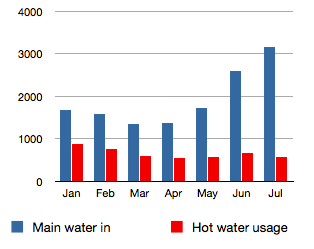Back in our June performance update, we mentioned that June was our first year anniversary for our solar PV system. In New York, the utility keeps track of the amount of power we use and generate (net-metering) over the course of a year and on the anniversary date credits the owner with any surplus power generated. We generated a surplus of 3,650 kWh from June 1, 2011 to June 1, 2012.
After several calls to customer service and waiting 75 days, we finally got our credit from the power company.
Are you sitting down? /joke/
$159.68
That works out to roughly $0.04 / kWh. That would be what the utility calls the ‘avoided rate’, the price they pay for not having to generate the electricity we sent back to the grid.
Oh well, at least it will pay for almost 10 months of “Delivery Service” fees in the coming year.
Now if New York could just get it’s act together and pass legislation creating a state-wide Solar Energy Renewable Credit (SREC) market. We generated over 8 megawatt hours in our first year of operation. SRECs in nearby Massachusetts are currently going for about $271 per megawatt hour. So 8 megawatt hours in Massachusetts would equal $2,168.
$2,168 sounds a lot better than $159.82 doesn’t it? It would also speed our payback period significantly and get a lot more people interested in solar.



